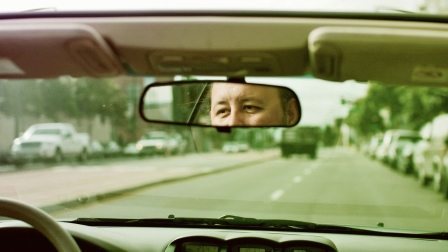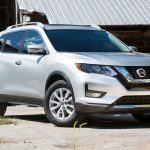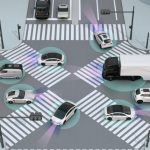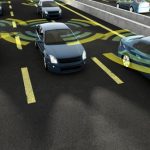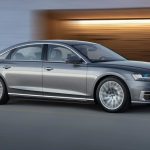Automated Cars Probably Won’t Make Human Drivers Obsolete
At a competition for the “most practicable safety device” in 1914, Brooklyn pilot Lawrence Sperry awed spectators in Bezons, France, when he stood up in the cockpit with both hands in the air mid-flight and asked his mechanic to crawl onto the wing. “The man did so, yet he had no more desire to die than you or I have,” read commentary from the New York Times. “Nothing happened.”
This was the first demonstration of autopilot. More than 100 years later, commercial pilots say they manually fly planes for just minutes of every flight, and the majority of military aircraft are drones.
But the FAA requires that two people be in the flight deck of a plane at all times, and commercial flights still have not just one, but two pilots. Humans who fly planes are in high demand these days. One study estimated that in 10 years, airlines will actually need 15,000 more pilots than they can hire.
The 100-year history of automated flight is worth keeping in mind as transportation executives make predictions about how the world—and their businesses—will be transformed by autonomous automobiles.
The first automated car feature debuted 43 years after Sherry’s demonstration of aviation autopilot. When Chrysler introduced cruise control in 1957, the New York Times called it “another step in the trend toward automation in the American automobile.” Chrysler initially referred to cruise control—the ability to set a speed and rely on the car to deliver gas to the engine without a human foot on the accelerator—as “autopilot,” which is also the name of Tesla’s self-driving car feature.
Toyota, Nissan, General Motors, and Google have estimated that automated cars will be on the road by 2020. Tesla CEO Elon Musk has promised complete autonomy within two years. And in a lengthy blog post that Lyft president and cofounder John Zimmer published last weekend, he became the latest transportation executive to predict that the era of self-driving cars is just around the corner, estimating it was a matter of “five years.”
Autonomous cars still don’t work well in the rain or snow, are susceptible to hackers, and have perception problems both on highways and in cities. But even with these shortcomings, they appear to be on the cusp of viability. Last week, when Uber began testing its first automated cars in Pittsburgh, reporters who went on a demo ride were nearly unanimous in commenting on how safe and normal the experience seemed—even boring.
Technology, though, is only one obstacle to the prospect of a driverless future.
Safely removing the driver from an automated car is a major piece of the puzzle. Tesla’s “master plan” (that is actually what Musk calls it) involves summoning your car to wherever you happen to need a pickup and the option to add it to the Tesla shared fleet (from which strangers can hail rides) to generate income for the owner when the vehicle is not in use. Lyft imagines that by 2020, half of its rides will be automated, which will reduce the price of taking any Lyft ride and increase demand. But hiring a safety engineer, like the one that accompanies Uber’s pilot vehicles on their test drives, is more expensive than an independent contractor driver, not less.
Autonomous car companies are already hard at work lobbying the government to approve these vehicles, but they face a different regulatory environment than airlines. In a paper for the Center for Internet and Society at Stanford Law School, Bryant Walker Smith, an assistant law professor at the University of South Carolina concluded that “automated vehicles are probably legal in the United States” (that’s also the title of the paper).
He did not, however, say that human-less cars were probably legal.
Smith points out that state vehicle codes “probably” prohibit automated driving, but “assume the presence of licensed human drivers who are able to exercise human judgment, and particular rules may functionally require that presence.” Missy Cummings, director of Duke University’s Humans and Autonomy Lab, says she is not aware of any state that has passed a law that says cars can be truly driverless. Musk has conceded these laws might impede his master plan: “Even once the software is highly refined and far better than the average human driver, there will still be a significant time gap, varying widely by jurisdiction, before true self-driving is approved by regulators,” he wrote in a blog post last summer.
Like automated airplanes, automated cars are likely to make fewer mistakes than human drivers. “Automated vehicles have the potential to save tens of thousands of lives each year,” President Obama wrote in an op-ed that coincided with new guidelines for the industry released this week. Cummings has argued that the two accidents that have killed Tesla drivers while they had “autopilot” engaged were partly caused by an over-reliance on the feature, which is not intended to be a replacement for driver awareness, even though the company markets it as fully automatic.
But like automated airplanes, the statistical risk reduction automated cars may provide will not automatically calm people’s fears. Another reason airplanes still have pilots is, quite simply, that current cultural norms don’t necessarily accommodate pilot-less flying. “Would a member of the public be comfortable getting into an airplane without a pilot? The short answer is no,” says George Perry, who runs the Air Safety Institute at the Aircraft Owners and Pilots Association (AOPA).
Whether this fear is justified has been debatable. Pilot associations like AOPA unsurprisingly tend to argue that while automation has made flight safer (last year, there were fewer aviation fatalities than ever before), it is still quite necessary to have capable human pilots on board. “When something is made by humans, it breaks,” Perry says. “And you have to have the ability to think on your feet.” He points to the plane that made an emergency landing on the Hudson River in 2009 after geese interfered with its engines. The FAA has identified weakening manual skills among pilots who rely on autopilot as a hazard.
Others have pointed to cases like one copilot’s decision last year to intentionally fly a plane into the French Alps, killing 150 people, as an argument that we would be better off in the hands of machines.
The FAA recently created regulations for commercial drones that weigh less than 55 pounds and don’t leave the sight of a human operator (this pretty much rules out deliveries). While executives at logistics companies such as FedEx have said they see fully automated cargo planes on the horizon, Cummings is doubtful that commercial passenger planes will operate without pilots. “In a very short period of time, the cargo airlines will become predominantly drones,” she says. “I think we will always have someone who is called a pilot in a passenger plane. The pilot in the future will be there to keep social order [more so than to fly the plane].”
Much like Uber did recently, back in 1957, Chrysler offered cruise control demos to reporters, one of whom commented that he “approached the device with fear as well as inexperience” and concluded “there was a strong sense of remoteness from the automobile, as if someone else were driving it and I was only steering.”
Cruise control is now so standard that it barely makes a new model’s feature list. We might look at cars without drivers the same way one day, but the calculus about how to get there involves more than just technical ability.
Fast Company , Read Full Story
(48)

